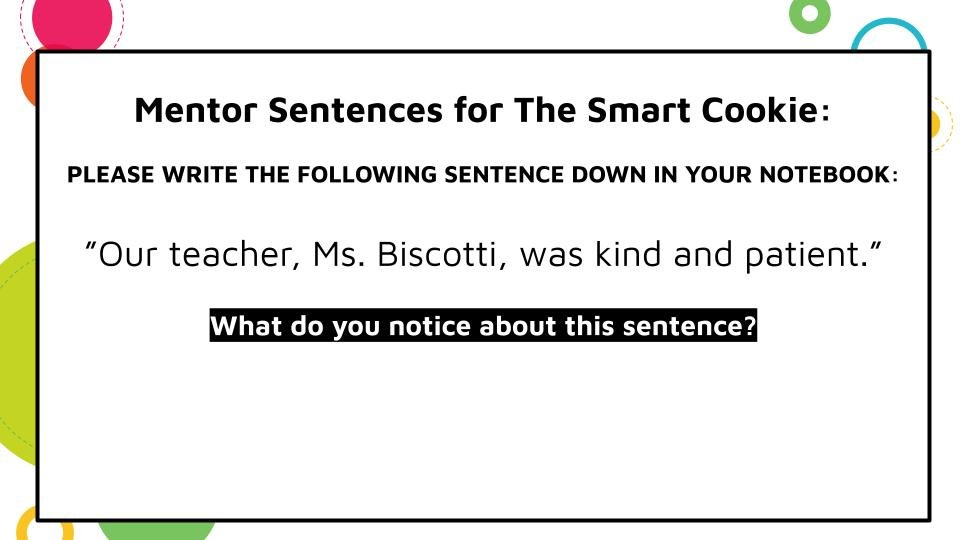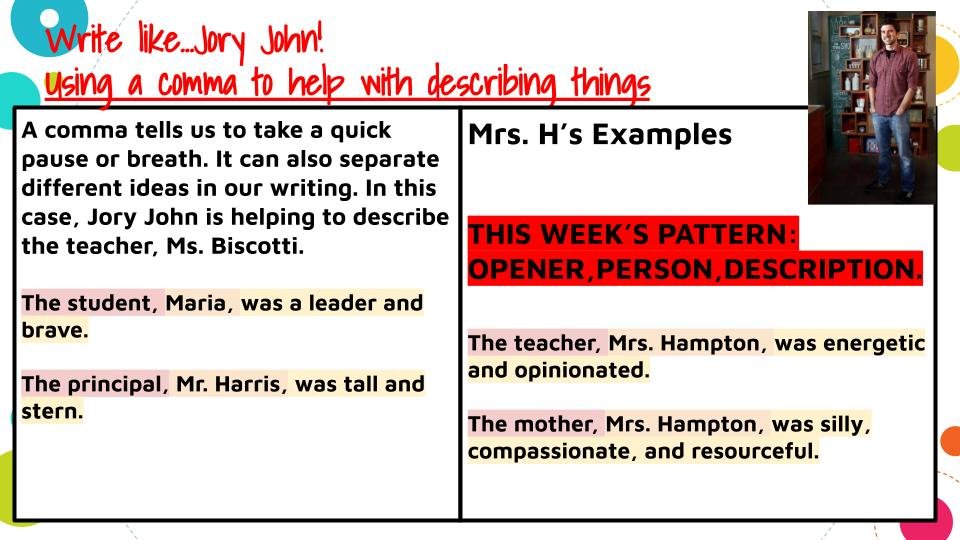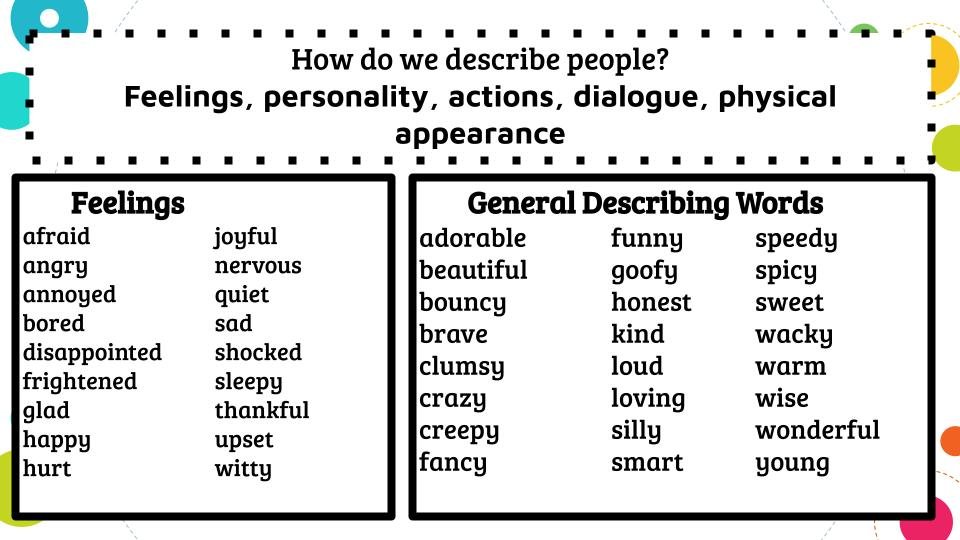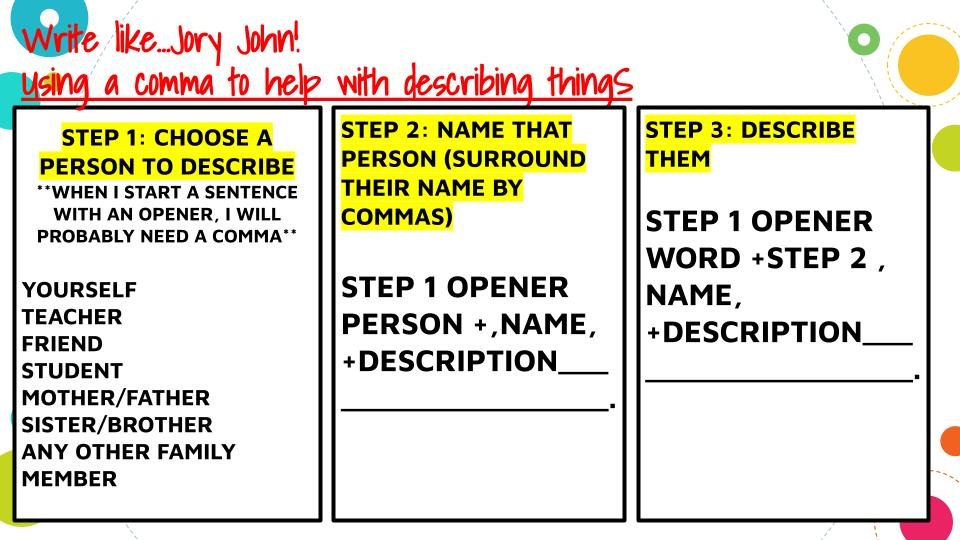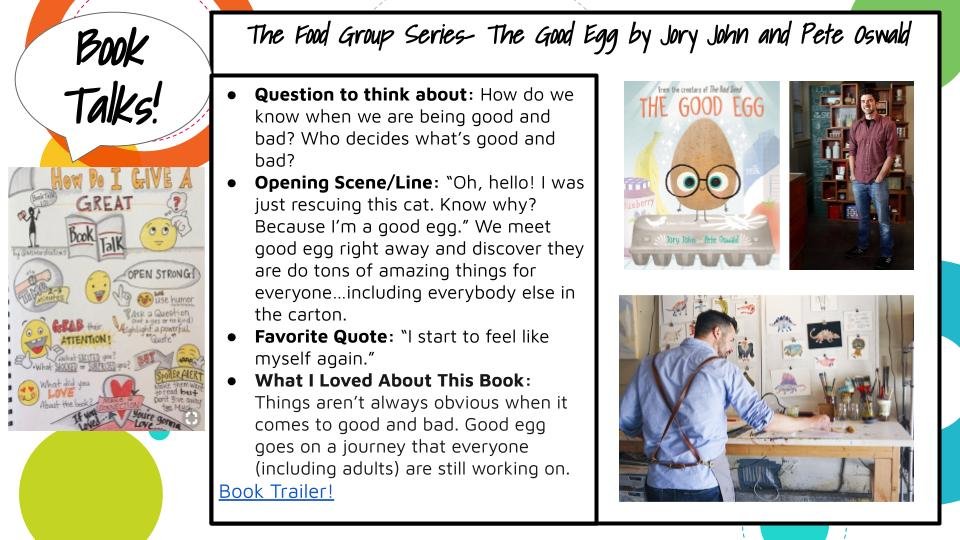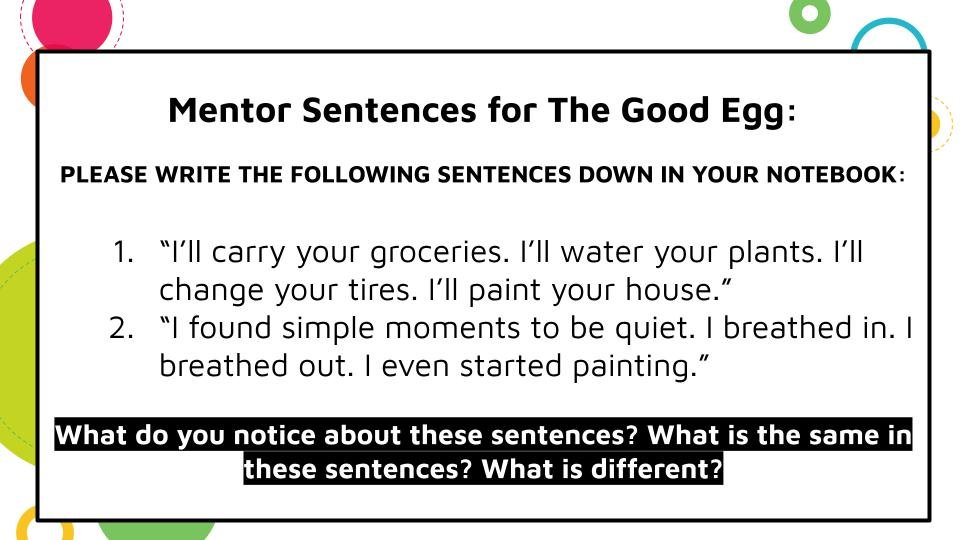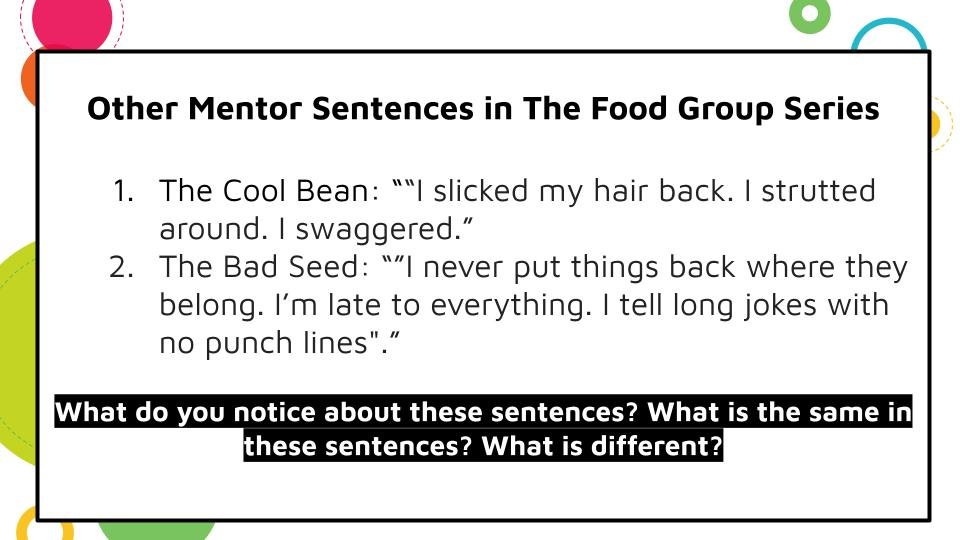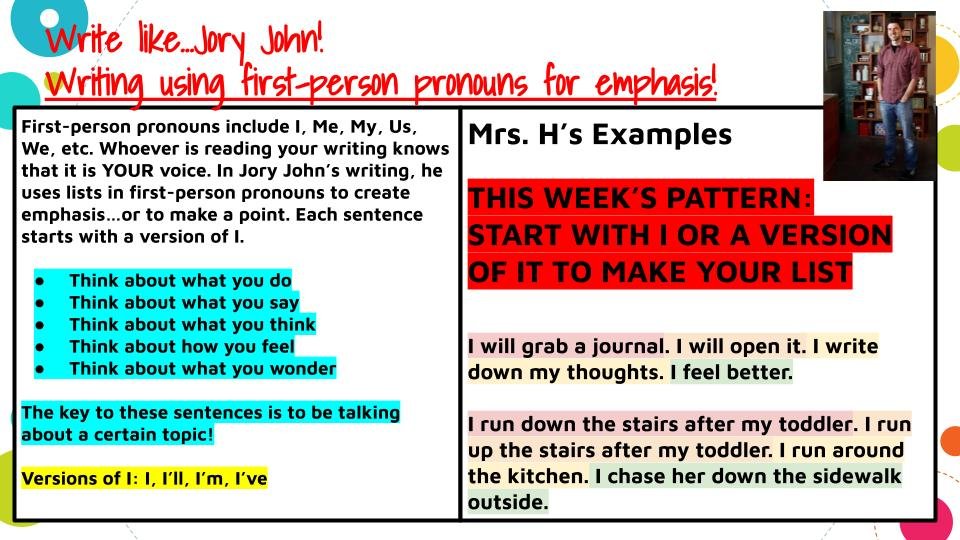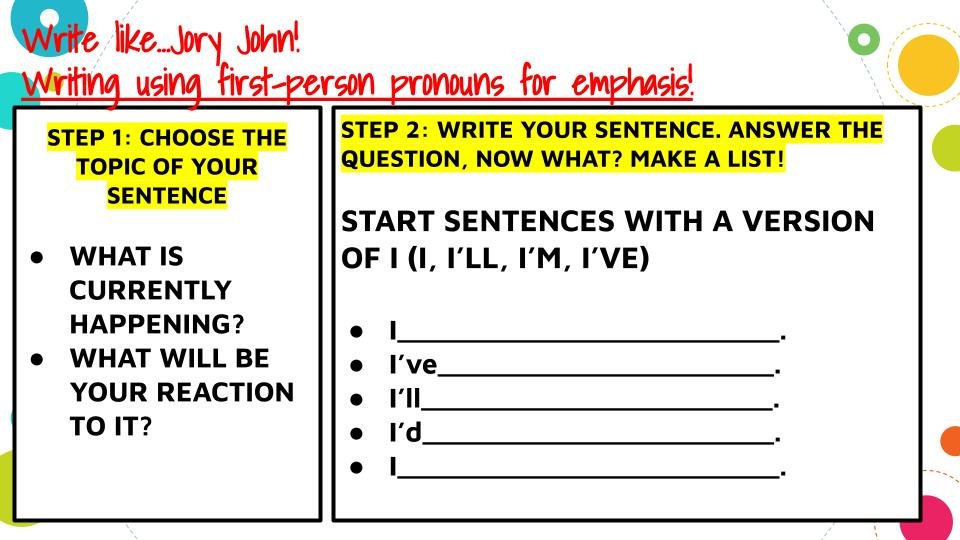Read Like a Writer: Using The Food Group as Mentor Texts
Write Like Jory John: How The Food Group Picture Books Can Fuel Your Students’ Writing
What could be better than working with mentor texts AND talking about food? I love The Food Group series from Jory John and Pete Oswald. All of the picture books in this series feature a type of food and then a description that hints at the story behind the food. The whole series can be used in a variety of ways in any classroom grades 4-12. These books would also make great introductory activities and back-to-school mentor texts because kids love talking about food (I mean, most of us like talking about food). This post is a breakdown of how to apply The Food Group series to lessons as a whole, and then it includes details in a few of the books so you can see the mentor text examples. I will also remind everyone of the mentor text process of how to use books to teach writing to kids.
Hope you are hungry! Let’s write.
Whole-Group Mentor Text Work
You can use picture books and chapter books (really any type of book) to do smaller, more specific mentor text work like sentence construction, grammar practice, or writer moves. You can also use these books to teach larger lessons that apply to bigger concepts. Things like theme, summary, analysis, and more. The cool thing about mentor texts is the versatility to teach a variety of concepts, skills, and strategies. You can go all the way from reader appreciation to specific writer moves.
Themes
All of the picture books in the series are great at teaching thematic concepts to kids. You could use the texts in The Food Group series to set up a narrative summary lesson or grab one of the books for practice if kids need review.
Adjectives and Description
All of The Food Group series books can be used for helping kids see the beauty of adding a description to their writing. You can also use The Food Group series as a back-to-school activity or regrounding activity (coming back from a back or long weekend) where you want to get to know kids more. Ask kids what food they would be and then have them put a personified description on that food. Sassy Macaroni and Cheese, anyone? Clumsy Pizza, of course!
Stations Work
There are so many books in the series that another lesson idea would be to take the smaller concepts or the larger concepts and set up The Food Group series stations for kids. With many of the books having a lexile range of 400-450, many of the activities you would have kids review can be done independently. You could have students identify themes, practice writing summaries with sentence frames, or even practice the writer moves that you see listed below. One of the big advantages of having the whole series written by the same author is that many moves are repeated.
Writer moves like this:
Use of a colon
Words of transition or time change
Snapshots/descriptions of places
Repetition of first-person pronouns for emphasis
Individual Book Examples
Starting a sentence with the subordinating conjunction “if”- ”If somebody upsets me, I’ll remember it. If somebody wrongs me, I won’t forget it. If somebody insults me, I’ll never ignore it. Nope.”
Asking the reader questions- ”See that banana over there?” “See that orange?” “See that lime?”
Commas in a series- ”But my family was ripe with humor, goodwill, and warmth.”
Use of a colon- ”Get this: I had a Ferris wheel, a magician, and hayrides.”
Passage of time/a character waiting- “I waited. Everybody was a little late, it seemed. No big deal. No big whoop. So I waited. A tumbleweed rolled by. A coyote howled in the distance. The sun sank behind the hills. And I waited.”
Words of transition and time change- After, then, finally, etc
Snapshot/description of a place- “Besides, it was nice out. I noticed the sky changing colors, the melodic chirping of the birds, the evening breeze, the buzz of the park’s insects coming alive at night. I suddenly felt grateful. And peaceful. And calm.”
Commas to help make lists- ”I wanted to be a cookie who knew all the answers, a cookie who felt confident in a group, a cookie who said, AHA! when solving a puzzle.”
Commas to help offset character description- ”Our teacher, Ms. Biscotti, was kind and patient.”
Words of transition and time change- Once, another time, occasionally, at first, next, then, etc.
Snapshot/description of a place- ”I stared out the window and watched the rain hit the river. There was something mesmerizing about the water-how it moved in such a chaotic way, swirling around and around, yet ultimately figuring out exactly where it needed to go.”
Using “as” to start a sentence as a preposition or a conjunction- ”As I spoke, I noticed some kids nodding at certain lines” and “As I built toward the finale, I felt myself becoming more confident and animated.”
Use of a colon- ”And the best part is: There’s always more to learn!”
Writing in fragments on purpose- “The cool beans are known all over school. From house to house. Across town. Beyond county lines.”
Use of dashes for clarification- “I watched as the beans I knew so well-the beans from my own pod-became the cool beans.”
Repetition of first-person pronouns for emphasis- “I slicked my hair back. I strutted around. I swaggered.”
Words of transition and time change- “But, out of nowhere, later, another, that afternoon, etc
Repetition of first-person pronouns for emphasis- “I’ll carry your groceries. I’ll water your plants. I’ll change your tires. I’ll paint your house.”
Commas to show a certain place- “Out there, on the road, under the stars, I really tried to focus on myself and what I needed.”
More repetition of first-person pronouns for emphasis- “I found simple moments to be quiet. I breathed in. I breathed out. I even started painting.”
Use of a colon- “Here’s what I realized: The other eggs aren’t perfect, and I don’t have to be, either.”
Repetition of first-person pronouns for emphasis- ”I never put things back where they belong. I’m late to everything. I tell long jokes with no punch lines".”
Use of commas/Prepositional phrases- ”I was born a humble seed, on a simple sunflower, in an unremarkable field.”
Complex sentences to signal time- ”When I woke up, it was dark outside.”
The Mentor Text Teaching Process
Let’s talk about the mentor text teaching process. After each teaching step, I will give an example of how to teach that part of the process using The Hate U Give by Angie Thomas from my slides. Remember, picture books and chapter books make great mentor texts for any grade level that you are teaching, as long as kids can identify with the ideas of the book.
What is a mentor text?
You may want to start by reviewing a few of these posts if you are unfamiliar with using a book as a mentor text for teaching writing in your classroom.
The basic gist is that by copying the structure of the author’s sentence, a student can feel empowered to write like the author and mimic their style using their own ideas.
Mentor texts are pretty cool because kids feel like writers. They are also awesome because teachers can help participate in this process as a writer and share their ideas with kids. I always introduce the mentor text with a book talk to see if kids have read the book before or to get them to want to read the book in the future. I always show a book trailer or some type of video element with a book talk because it gets nonreaders (or kids who self-identify as nonreaders) immediately engaged.
Find your mentor sentences. Have kids write them down to get the pattern.
I found a ton of examples in the individual books from The Food Group series listed above. Use those ideas or try to come up with your own. The goal is to have kids write the author’s sentence down so they understand the structure. Kids don’t understand right away that they are writing complex sentences. We have to show them how it feels to write a complex sentence, and THEN explain the rules of dependent and independent clauses (Just an example!)
I offer to have students give observations about what they see in the sentences. They may offer things like pronouns or ideas from the sentence. For complex sentences, I want kids to notice the commas.
Set up a sentence frame using some of the author’s words. Help kids fill in the blanks if needed. Teachers can write their own example sentences.
I use slides to do my setups because I want to keep everything in one place, but you can also just write a sentence frame on the board. If kids say they don’t have ideas, one strategy I love is getting a few brave kids to come up and act out something silly. Remember, for any good sentence you just need a subject and an action. The rest is just frames!
So, let’s do two mentor text examples from The Food Group series books.
The Smart Cookie Book: Use a comma to help describe people or things
The Good Egg Book: Make a list of sentences that start with first-person pronouns for emphasis

